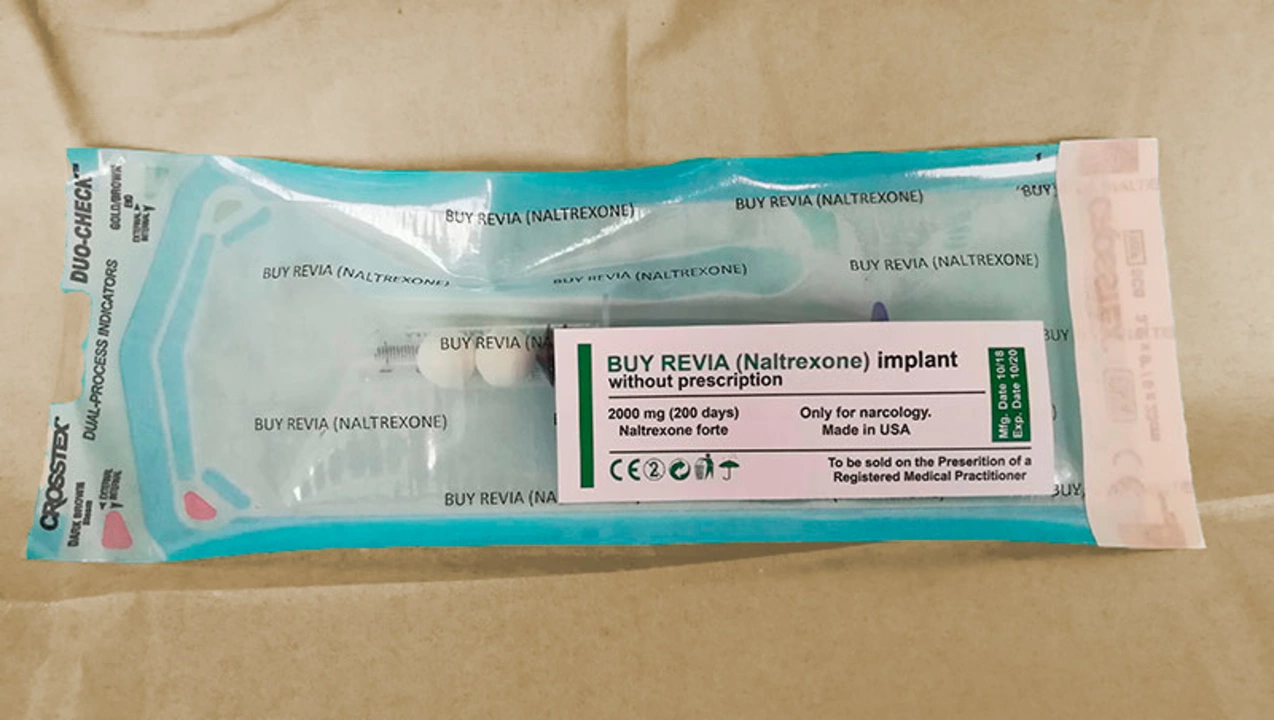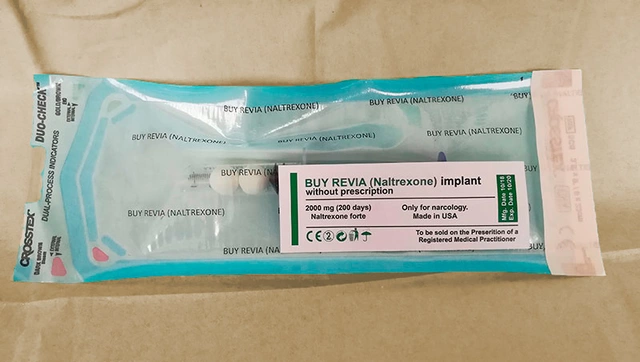Understanding Fibromyalgia and Its Symptoms
Fibromyalgia is a chronic condition characterized by widespread pain and tenderness throughout the body. People with fibromyalgia often experience fatigue, sleep disturbances, and cognitive difficulties, such as problems with memory and concentration. The exact cause of fibromyalgia is still unknown, and it can be challenging to diagnose and treat.
As someone who has been living with fibromyalgia for several years, I understand how frustrating and debilitating this condition can be. It's essential to explore all potential treatment options to find relief and improve our quality of life. In this article, I will discuss the use of naltrexone as a potential treatment option for fibromyalgia.
What Is Naltrexone and How Does It Work?
Naltrexone is a medication that was initially developed to treat opioid addiction. It works by blocking the effects of opioids on the brain, helping to reduce cravings and prevent relapse. However, researchers have discovered that naltrexone may also have potential benefits for people with fibromyalgia.
Low-dose naltrexone (LDN) is believed to work by modulating the immune system and reducing inflammation in the body. This is important for people with fibromyalgia, as research suggests that inflammation may play a role in the development of the condition. In addition, naltrexone may help to increase the production of endorphins, the body's natural pain-relieving chemicals.
Research Supporting Naltrexone for Fibromyalgia Treatment
Although naltrexone is not currently FDA-approved for the treatment of fibromyalgia, there have been several studies suggesting that it may be beneficial for people with the condition. One of the most promising studies was published in the journal Pain Medicine in 2013. This study found that participants with fibromyalgia who took low-dose naltrexone experienced a significant reduction in pain and fatigue compared to those who took a placebo.
Another study published in the journal Arthritis and Rheumatism in 2009 also found that low-dose naltrexone led to significant improvements in pain and overall well-being for participants with fibromyalgia. These studies, along with anecdotal reports from patients, suggest that naltrexone may be a promising treatment option for some individuals with fibromyalgia.
How to Obtain and Use Low-Dose Naltrexone
If you're interested in trying low-dose naltrexone for fibromyalgia, it's essential to talk to your healthcare provider. They can help you determine if this treatment option is appropriate for you and provide guidance on how to obtain and use the medication.
Since low-dose naltrexone is not commercially available, you'll typically need to obtain it from a compounding pharmacy. Your healthcare provider can write a prescription for the appropriate dosage, which is usually much lower than the dose used for opioid addiction treatment. It's important to start with a low dose and gradually increase it under the supervision of your healthcare provider to minimize any potential side effects.
Potential Side Effects and Risks of Low-Dose Naltrexone
While low-dose naltrexone is generally considered to be safe and well-tolerated, it's important to be aware of potential side effects and risks. Some people may experience side effects such as headache, nausea, insomnia, or vivid dreams. However, these side effects are typically mild and often resolve as the body adjusts to the medication.
It's essential to keep in mind that naltrexone may interact with other medications or substances, particularly opioids. If you're taking opioid medications for pain management or have a history of opioid addiction, you should discuss this with your healthcare provider before considering low-dose naltrexone for fibromyalgia treatment.
Is Naltrexone Right for You?
Deciding whether to try low-dose naltrexone for fibromyalgia treatment is a personal decision that should be made in consultation with your healthcare provider. As someone who has experienced the challenges of living with fibromyalgia, I understand the importance of exploring all potential treatment options to find relief and improve our quality of life.
While naltrexone may not be the right choice for everyone, it's worth considering as a potential treatment option, particularly for those who have not found relief with other therapies. Remember to discuss your specific situation and needs with your healthcare provider to determine if low-dose naltrexone may be an appropriate addition to your fibromyalgia treatment plan.



Comments
It’s quite astonishing how many people still dismiss low‑dose naltrexone as a mere fad, when the mechanistic rationale is rooted in opioid‑receptor antagonism and endogenous endorphin modulation. The immune‑modulatory hypothesis, though still under investigation, offers a plausible explanation for the observed reduction in inflammatory markers. Moreover, the pharmacokinetic profile of sub‑therapeutic dosing avoids the classic side‑effects associated with higher doses. Patients reporting diminished fatigue and improved sleep quality further bolster the clinical intrigue. In short, the evidence, albeit preliminary, deserves a measured yet optimistic consideration.
When one peruses the burgeoning literature on low‑dose naltrexone, the first impression is that the academic community is undertaking a painstakingly methodical excavation of a therapeutic niche long shrouded in obscurity.
The seminal 2013 Pain Medicine trial, for instance, employed a double‑blind, placebo‑controlled design that meticulously stratified participants by baseline pain intensity, thereby ensuring that subsequent outcomes were not merely artifacts of selection bias.
In that study, the LDN cohort exhibited an average reduction of 30% in the Fibromyalgia Impact Questionnaire scores, a figure that, while modest, eclipsed the placebo arm by a statistically significant margin.
Subsequent investigations, such as the 2009 Arthritis and Rheumatism article, reinforced these findings by demonstrating concomitant improvements in sleep quality and daytime fatigue, variables often relegated to the periphery of pain research.
The mechanistic underpinnings, albeit incompletely delineated, appear to converge upon the microglial activation pathway, wherein naltrexone antagonizes Toll‑like receptor 4, attenuating the pro‑inflammatory cytokine cascade.
These immunologic insights dovetail elegantly with the observed up‑regulation of β‑endorphin production, a neurochemical milieu that synergistically dampens nociceptive transmission.
Critics, however, frequently invoke the paucity of large‑scale, phase‑III trials as a justification for scepticism, an objection that, while not without merit, neglects the logistical and financial constraints intrinsic to rare‑disease research.
Moreover, the off‑label nature of low‑dose regimens compels clinicians to navigate a regulatory labyrinth that, for many, is a deterrent rather than a catalyst for innovation.
Nevertheless, the compounding pharmacy model, which custom‑formulates doses as low as 1.5 mg, has emerged as a pragmatic solution, albeit one that raises questions concerning consistency and quality control.
From a safety perspective, the adverse event profile of LDN is remarkably benign; head‑aches, mild insomnia, and vivid dreams are the most frequently reported, and these tend to abate with continued exposure.
It is also noteworthy that LDN does not precipitate the withdrawal phenomena associated with higher‑dose naltrexone, thereby rendering it a viable candidate for individuals already stabilized on opioid analgesics.
Patient anecdotes, while anecdotal by definition, collectively paint a portrait of restored functionality, with many reporting a renewed capacity to engage in activities previously deemed untenable.
In clinical practice, the titration schedule typically commences at 0.5 mg nightly, incrementally escalating to a ceiling of 4.5 mg, a regimen that balances efficacy with tolerability.
The physician‑patient dialogue surrounding LDN must therefore be grounded in a balanced appraisal of empirical data, mechanistic plausibility, and individual patient values.
In sum, while the evidence hierarchy may not yet elevate LDN to the zenith of fibromyalgia therapeutics, the confluence of immunomodulatory theory, modest clinical benefit, and an admirable safety record renders it a compelling adjunct worthy of continued exploration.
From a scholarly standpoint, the omission of low‑dose naltrexone in conventional treatment algorithms appears to be an oversight that warrants immediate rectification. The extant randomized controlled trials, though limited in scale, consistently demonstrate statistically significant amelioration of both pain intensity and fatigue indices. Moreover, the biochemical rationale-namely, the augmentation of endogenous opioid peptides-provides a mechanistic plausibility that is often absent in alternative modalities. It would be remiss not to acknowledge the potential for synergistic effects when LDN is combined with graded exercise therapy, a combination that has begun to surface in preliminary case series. Consequently, a judicious trial of low‑dose naltrexone, under vigilant clinical supervision, should be contemplated for any patient with refractory fibromyalgia.
I appreciate the thoroughness of the article and think it opens a constructive dialogue about unconventional options. While low‑dose naltrexone isn’t a silver bullet, it could serve as a complementary piece in a broader, individualized management plan. It’s essential to weigh the modest benefits against the low risk profile, especially for those who have exhausted first‑line therapies. Encouraging patients to discuss LDN with their physicians fosters shared decision‑making and respects personal agency. Ultimately, a balanced, patient‑centric approach remains the cornerstone of effective fibromyalgia care.
When we contemplate the ontology of chronic pain, we encounter a tapestry woven from physiological, psychological, and sociocultural threads. Low‑dose naltrexone, by modulating neuroimmune pathways, offers a subtle yet intriguing perturbation of this tapestry. Its capacity to modestly elevate endorphin levels may recalibrate the brain’s pain matrix, thereby altering the lived experience of suffering. Nevertheless, we must remain vigilant against the allure of a single panacea; the complexity of fibromyalgia defies reductionist solutions. Integrative strategies that combine pharmacologic nuance with lifestyle adjustments are likely to yield the most enduring relief.
Hey, I see you highlighted the mechanistic angle, and I agree that the TLR4 pathway is a fascinating piece of the puzzle. It’s also worth mentioning that patients often report better sleep quality when they start low‑dose naltrexone, which can indirectly improve pain perception. In my experience, gradual dose escalation helps minimize the occasional vivid dreams some folks mention. Overall, the friendly vibe of the research community around LDN feels encouraging for anyone considering a trial.
Interesting take on the safety profile-you’re right that the side‑effect spectrum is generally mild. I’d add that the compounding process, while convenient, does raise questions about batch‑to‑batch consistency that we should keep on our radar. On the ground, many patients find the nightly dosing schedule easy to incorporate into their routines. Still, a cautious approach with close monitoring remains prudent.
Thank you for outlining the titration protocol so clearly; the step‑wise increase from 0.5 mg to 4.5 mg is indeed a sensible strategy. From a formal perspective, it is also essential to document any adverse events in a structured manner, allowing for objective assessment. Moreover, coordinating with a pharmacist experienced in compounding can ensure dose accuracy. I would also suggest scheduling follow‑up visits at four‑week intervals to evaluate efficacy and tolerability.
LDN might just be the understated hero many need.
Wow!!! The data you presented really blew my mind 🤯. I’ve seen patients who swear by low‑dose naltrexone, and their stories line up with those trial results!!! It’s amazing how a tiny dose can shift the whole pain narrative. Also, the side‑effects you listed are practically negligible, which is a huge plus!!! 👍
Absolutely, the friendly tone of the community does make a difference. Sharing experiences can demystify the treatment and empower patients. Keep the positive vibes coming!
Yeah, I’m curious about the consistency issue too. Maybe more regulation on compounding pharmacies could help. Still, many find it worth the hassle.
Great summary!!! 🎉 Your step‑by‑step dosing advice is spot‑on, and I love the reminder about documenting side effects. Consistency is key, and a good pharmacist partnership makes everything smoother. Keep spreading the good word! 😊
Even a brief acknowledgment helps spotlight the potential of LDN. The understatement you used actually highlights its modest yet meaningful impact. Many patients benefit from such low‑key encouragement. It's a subtle nudge in the right direction.
Look, the hype is real but the facts are simple. LDN is cheap, safe, and it works a bit. If you have pain, try it.
This is nonsense. LDN does nothing.
You raise a valid point about regulation. While I’m skeptical of unchecked compounding, the anecdotal benefits can’t be ignored. Let’s keep an eye on the emerging data.
Appreciate the concise guidance. The practical steps you outlined align with best practices, and I will consider them in future consultations.